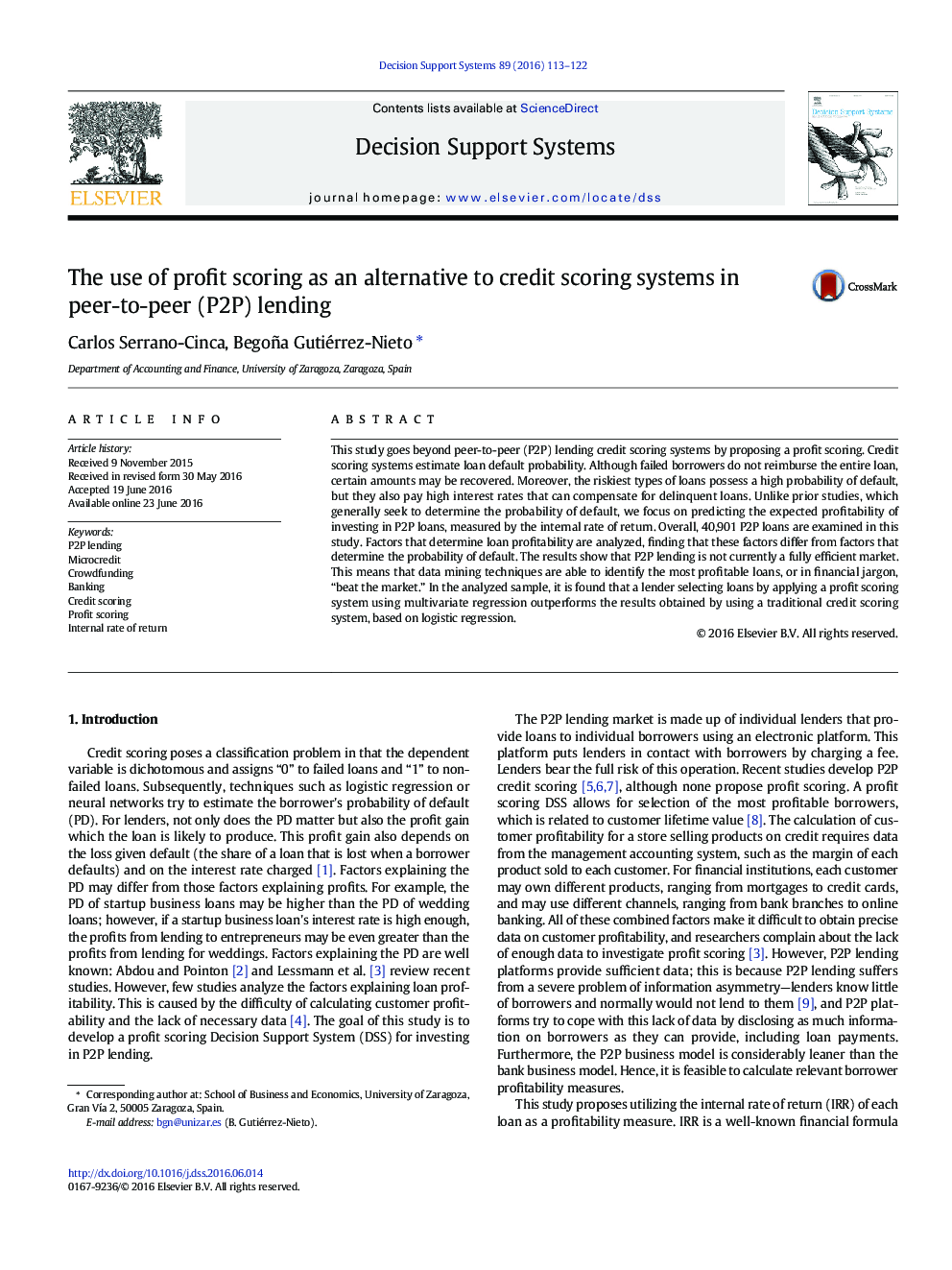| Article ID | Journal | Published Year | Pages | File Type |
|---|---|---|---|---|
| 551975 | Decision Support Systems | 2016 | 10 Pages |
•Credit scoring systems estimate loan default probability (fully paid vs charged off).•Profit scoring systems estimate loan profitability (internal rate of return).•Factors explaining profitability differ from factors explaining default probability.•A profit scoring system outperforms the results obtained by a credit scoring system.
This study goes beyond peer-to-peer (P2P) lending credit scoring systems by proposing a profit scoring. Credit scoring systems estimate loan default probability. Although failed borrowers do not reimburse the entire loan, certain amounts may be recovered. Moreover, the riskiest types of loans possess a high probability of default, but they also pay high interest rates that can compensate for delinquent loans. Unlike prior studies, which generally seek to determine the probability of default, we focus on predicting the expected profitability of investing in P2P loans, measured by the internal rate of return. Overall, 40,901 P2P loans are examined in this study. Factors that determine loan profitability are analyzed, finding that these factors differ from factors that determine the probability of default. The results show that P2P lending is not currently a fully efficient market. This means that data mining techniques are able to identify the most profitable loans, or in financial jargon, “beat the market.” In the analyzed sample, it is found that a lender selecting loans by applying a profit scoring system using multivariate regression outperforms the results obtained by using a traditional credit scoring system, based on logistic regression.
